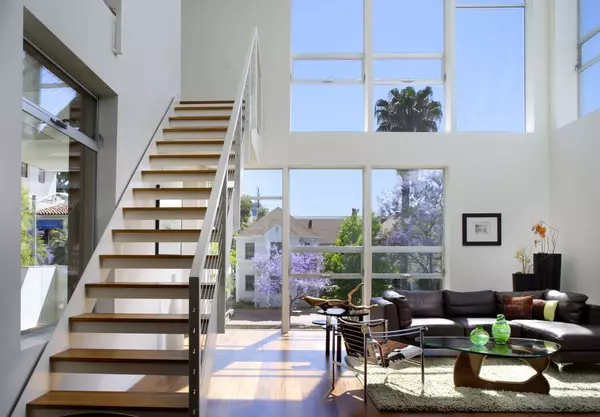Build, baby, build: How the US can start fixing its housing supply crisis
Let’s start with the bad news: The U.S. housing deficit is currently between 1.5 million and 8 million homes (estimates among experts vary widely). And worse, the core reasons for such a shortage cannot be easily or quickly addressed.
But there is good news, too, speakers said Wednesday at the U.S. Housing Supply Summit in Washington, D.C: There is finally widespread political acceptance that we have a housing crisis in this country, and lawmakers on both sides of the aisle are engaging with the issue to boost supply.
At a fundamental level, the lack of supply over the last decade-plus can be attributed to the five Ls, said Robert Deitz, chief economist of the National Association of Homebuilders:
- Labor
- Lots
- Lending
- Lumber/materials
- Legal/reg costs

“There is no single, simple and scalable solution to this supply problem,” and we’ll need to build between 1.1 million and 1.5 million units over the next decade to start making a real dent in the undersupply problem, he said.
Zoning/building codes/planning
Speakers on Wednesday said the U.S. lags behind other advanced nations when it comes to streamlined regulations that promote the construction of new homes. Where the European Union has three building code contexts for offsite construction, and Sweden has only two, the U.S. has five. It makes construction in the U.S. slow and unpredictable.
Worse, the U.S. has had the ability to streamline its code for 50 years and simply hasn’t, said Ivan Rupnik, founding partner of MOD X.
Regulatory costs alone added about $94,000 per new home as of 2021, according to Deitz.

NIMBYism and inertia within individual municipalities has also been difficult for developers to overcome, but some are fighting back. Chris Gamvroulas, president of Utah-based Ivory Development, said they’ve gone to the state capitol and worked with the League of Cities and Towns to find consensus on some items. They resisted at first, but Ivory has helped influence the passage of 70 bills in the state, almost all regulatory. Examples include how much bonding a city requires and shot clocks for reviewing engineering designs.
Ivory is currently working with cities to streamline zoning, he said. One might have three pages for industrial zoning, but 90 pages for resi zoning, which often causes delays.
Building codes are a thorny issue, as is the fact that inspectors interpret them differently across the country. In Colorado, for example, there are over 300 different building codes. And in North Carolina, a large national homebuilder like PulteGroup can’t operate efficiently because the state’s code doesn’t allow for semi-conditioned space, which means Pulte can’t run un-insulated duct through the floor system (which is good for costs and energy efficiency).
“If automobiles had the same codes that housing do, a Toyota Corolla would cost $200,000,” said Eric Schaefer, the chief development officer at Fading West Development.
“As much as this is a technical problem, there are the these elaborate and Byzantine codes that we have, it’s also a political one,” added Mike Kinsella, CEO of Up for Growth. “I think that explains why, over the past decade, from Utah to Colorado, to Oregon to Maine, to even Nebraska, we have seen state legislators setting minimum standards around allowable housing types and low allowable base codes. But the fact is, we can’t rely on state legislatures alone to break the political logjam, the impasse that stalls out and limits too many homes around the country.”
Kinsella suggested tying federal infrastructure funds to zoning changes that encourage building.
On a local level, there remain too many review cycles in permitting and there’s limited consistency from town to town with local inspectors. One developer said he couldn’t get a certificate of occupancy for two months because the town requested he change the property’s address.
Planning departments, according to Infilla‘s CEO Jenny Song, are suffering from
- Technology from the 1990s and;
- 2. A silver tsunami of retirements
That results in institutional knowledge leaving, causing more delays and frustration.
Housing finance/homebuilding
Speakers on Wednesday said that the Section 8 and Low Income Housing Tax Credit (LIHTC) programs provide consistent liquidity to the multifamily market, but one (Section 8) is potentially under threat, and the other, LIHTC, is a major challenge to work through.

Berkadia‘s head of GSE lending, Dan Brendes, said they’d like to do more takeout financing for the banks to free them up to do more construction lending. He noted that the GSE programs haven’t evolved much in recent years. Others suggested a CHIPS-style act to support modular housing like Boxabl and Blueprint.
Perhaps President Trump could declare a nationwide state of emergency and issue a moratorium on changes to zoning that reduced density, affordability and building. Maryland’s housing secretary, Jake Day, said developers could receive a de-facto denial for any permitting process that extends over 12 months and would have a third-party adjudicate it (all paid for by the municipality).
Lisa Davis, a partner at private equity-backed Vistria Group, suggested privatizing the FHA‘s 221D4 multifamily program, which encourages construction or rehab projects of single-room apartment buildings with financing provided by HUD. There were also calls to repeal the Davis-Bacon Act, which requires developers to pay prevailing wages and significantly drives up costs.
Jonathan Lawless, a former vice president of affordable housing and product at Fannie Mae (and is now at Bilt Rewards), said the GSEs could quickly make a splash with four initiatives.
- Manufactured housing. In the last 10 years the GSEs have gone from being extremely restrictive to somewhat restrictive when they should be “leaning in” and making it way easier. In fact, they should be incentivizing financing with energy and modular, Lawless said.
- ADUs. “We make it very, very hard to unlock the $30 trillion of equity that people have in their homes that they could be using to put homes on their backyard,” Lawless said. A second lien where you count the income from the built ADU would be “an incredible program,” and the GSEs could do it with the flip of a switch, he said.
- C to P (construction to permanent). “Fannie Mae can do a single closed C to P program on day one — you’re getting GSE financing just as the construction is getting started. It would unlock a ton of lower cost construction financing,” Lawless said.
- AD&C financing. The GSEs historically have financed construction projects and have HUD for authorization to do this. “If they could, it is a much better place for them to be spending some of the subsidies they’re using on the demand side. Rather, they should be moving that to the construction side,” he said.
We’ll have more stories on the housing supply crisis in the coming days, so check back.
Categories
Recent Posts











